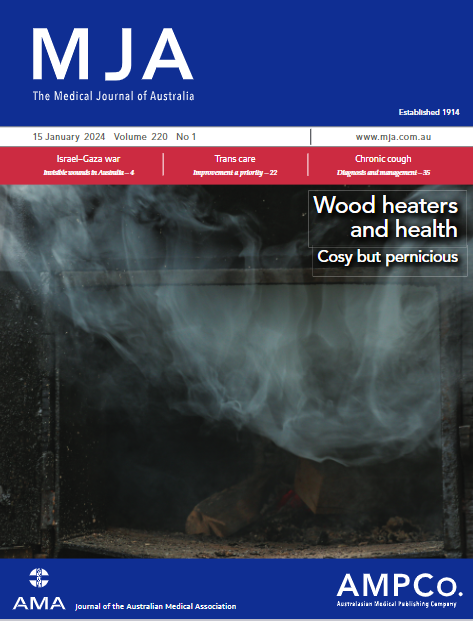Incidental findings during lung low-dose computed tomography cancer screening in Australia and Canada, 2016–21: a prospective observational study
Abstract
Objectives
To investigate the type and frequency of incidental findings in people at high risk of lung cancer who undergo baseline low-dose computed tomography (LDCT) lung cancer screening in Australia and Canada.
Study design
Prospective observational study; sub-study of the single-arm International Lung Screen Trial (ILST) lung cancer screening study.
Setting, participants
Australian and Canadian people enrolled in the ILST, 25 August 2016 – 21 November 2020; inclusion criteria: aged 50–80 years, active smoking history, and high risk of lung cancer (estimated six-year lung cancer risk of 1.51% or more, based on the PLCOm2012 risk prediction model; or a smoking history of 30 pack-years or more). Initial LDCT screening was undertaken at one of five participating hospitals in Australia and one in Canada.
Main outcome measures
Prevalence of incidental findings during baseline LDCT lung cancer screening (using a research checklist), by country, classified by experienced radiologists as requiring or not requiring clinical follow-up; reporting of incidental findings in clinical reports for treating physicians (two Australian sites only).
Results
A total of 4403 participants completed baseline LDCT screening at the six participating hospitals. The mean age (64–65 years) and the proportions of participants who currently smoked (47–55%) were similar at all six sites; the proportion of female participants was larger in Sydney (52%) and Vancouver (51%) than the other sites (39–44%). At least one incidental finding was made during baseline LDCT screening of 3225 people (72.8%); findings in 454 people (10.3%) required clinical follow-up. The most frequent incidental findings were coronary artery calcification (3022 of 4380 participants with recorded results, 69.0%) and emphysema (2378 of 4401, 54.0%). Marked differences between the Australian and Canadian sites in the prevalence of incidental findings were noted, and also between the two Australian sites in their communication of incidental findings in clinical screening reports.
Conclusion
Incidental findings during lung cancer screening were frequent, and clinical reporting of these findings was inconsistent. When LDCT lung cancer screening is introduced in Australia, a standardised reporting template should be used to provide clear guidance about the clinical significance of such findings.
Trial registration
ClinicalTrials.gov, NCT02871856 (prospective, 18 August 2016).


 求助内容:
求助内容: 应助结果提醒方式:
应助结果提醒方式:


